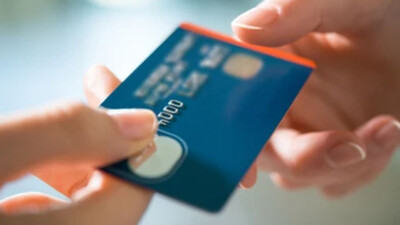Smart Habits You Should Adopt to Control Your IDFC First Select Credit Card Spends
A credit card like IDFC Wealth credit card can be nothing less than magic to certain people, providing them with access to credit that helps them realize their aspirations more quickly than any other means such as a loan.
However, one must be aware that overspending is a drawback of credit cards that comes along with a host of advantages which this payment mode gives. We must all have an extravagant habit of impulsive spending tat can easily turn into a money problem. For some people, it doesn’t take long to accumulate a debt of one lakh rupees or more. To gain complete control over your IDFC first select credit card usage, remember to:
Limit how many credit cards you use: It is very likely that you have more than one credit card in the modern era. One may offer you money on fuel purchases, but another can grant you access to an airport lounge. However, did you know that having too many credit cards in your possession can give you nightmares since keeping track of your spending gets harder with time? It is advised that you continue with the IDFC first select credit card that provides you with the greatest advantages for the kinds of purchases you typically make.
If you find it difficult to stick with just one card, maintain one for routine purchases and restrict the use of the other to certain things. One card can have a credit limit of 1 lakh while another may have a limit of 3 lakh. But if you’re one of those people who thinks you can spread out your spending around two or three cards, keeping that many cards makes sense because it keeps you from reaching the cap.
Use only the credit provided to you: While using a IDFC Wealth credit card does allow you the freedom to spend, it is advised that you only use about one-third of your total credit limit, which may be anything between one lakh and three lakh rupees or even less. It’s because going above 40% of your credit limit could cause your credit score to decline. High credit consumption gives the impression that the user is credit-hungry and has a larger risk of default, which makes it harder for you to have access to further credit options. You can do this by combining the use of a debit card in order to keep this percentage between 30 and 40%.
Keep up the practise of paying the entire credit card statement promptly: Most people just pay the minimal amount owed on their credit card balances, which can range from Rs. 1 lakh to Rs. 3 lakh or other amounts, which can cause the balance to grow and further complicate your repayment efforts. Paying your IDFC first select credit card bills on time is one of the best ways to guarantee that your credit utilisation percentage is low. Long-term, this will assist you in keeping your credit card debt at acceptable levels.
Maintain a modest credit use ratio. The ratio illustrates the connection between your overall spending cap and outstanding IDFC Wealth credit card balances. Many experts agree that your CUR shouldn’t be higher than 40%. It’s because having high ratios could harm your credit score. A low credit score can hurt both your financial situation and personal well-being. In order to be safe, always strive for a 30% CUR because it provides you more leeway to pay for unforeseen costs.
Create budget alerts: You may respond instantly to your spending patterns by setting up expenditure alerts. Additionally, you have the choice to set a threshold limit on credit limitations, which will ensure that you don’t go over the spending cap you first set. You can turn on security alerts that will look for possibly fraudulent spending trends as you set a spending limit on your credit cards.
Try to delay your purchasing if you can: Negative emotions frequently trigger shopping sprees, so it is advised that if you are feeling down or depressed, you resist the impulse to shop until you are feeling better. Therefore, it is advised to avoid engaging in any retail or luxury treatment the next time you are feeling down.
Use your IDFC Wealth credit card for purchases you would have made regardless: When using a credit card for the first time, it could feel as though you are temporarily utilising someone else’s funds. Although you will eventually have to pay back the money, if you spend money simply because you have a credit limit, it will come back to bite you soon. Therefore, regardless of the method of payment, you should spend on the items that you were already planned to buy.
Always Keep in mind your financial objectives: You should be aware that excessive spending will undoubtedly cause you to lose sight of your financial objectives. To make sure you use your credit card responsibly, all you need to do is ask yourself if the purchases you make will make it harder for you to achieve your financial goals.
Employ the interest-free periods: Take advantage of your credit card’s interest-free time. Credit card customers are given a specific amount of time to make their payments without incurring interest.
Check your monthly statements: If you have a IDFC first select credit card, you will get a statement every month. Reading through your monthly credit card account is one strategy to make sure you don’t default on your debt because it prevents you from paying fraudulent charges, even though most individuals only give it a quick scan.
Take your credit cards out of online payment systems: The best way to ensure you don’t overspend much is to remove your credit cards from all of your internet accounts, especially from shopping sites. This can make a significant impact. When your card is stored, it is quite simple to make purchases without giving it any thought. However, if you have to manually key in your card number, it will take considerably more work from you and is likely to cause you to consider your purchases more thoroughly.
Credit cards are now a necessity and, as long as you know how to use them, they’re not a bad thing. You are ultimately responsible for resisting the impulse to spend. Having a strict spending routine will help you make the best use of your IDFC Wealth credit card.


